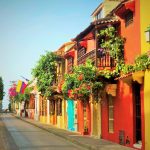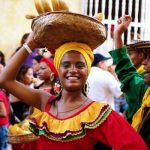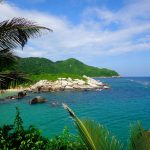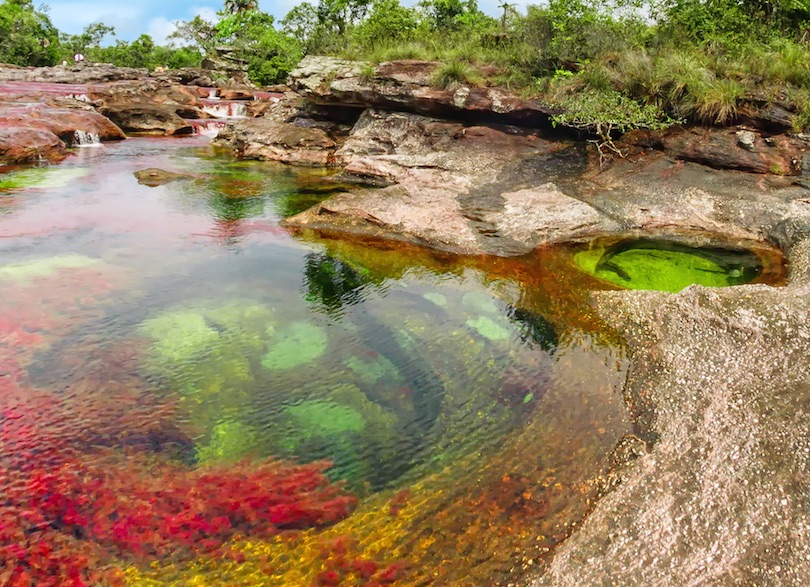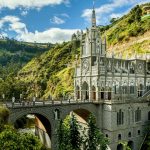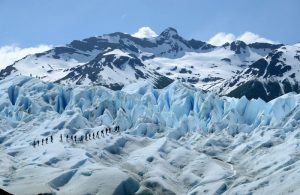Led by Cartagena’s extraordinarily preserved old city, Colombia offers an off-the-radar treasure trove of wonderfully photogenic cobblestoned towns and villages that often feel like they hail from a different century. Unweathered Barichara and sleepy Mompós feel like movie sets, while whitewashed Villa de Leyva appears stuck in 16th-century quicksand. Colombia’s panorama of postcard-perfect pueblos are among the best preserved on the continent; just don’t explore them in high heels!
Money
The currency in Colombia is the Colombian peso. ATMs are widely available. Credit cards are common and accepted in many hotels and restaurants. Almost all major banks have ATMs, and they usually work fine with cards issued outside Colombia (Bancolombia being the ornery exception for some folks). Cash machines affiliated with Banco de Bogotá/ATH and BBVA are good bets. Most banks have a maximum cash withdrawal limit of COP$300,000 per transaction, but it varies. Bancolombia, Davivienda and Citibank allow double that from most branches. If you need more, just pull out twice, and be quick about it. The machines have very little tolerance for those that take their time navigating the menu – a second of hesitation and it cancels the transaction! If you must use an ATM after dark, always use one inside a gas station or shopping mall. Some ATMs can be fussy if you do not have a chip-and-pin ATM card.
Counterfeit pesos are a major problem in Colombia and you’ll notice cashiers everywhere vigorously checking notes before completing transactions. While it is difficult for visitors to identify dud bills, if you are given one that is old, battered or just doesn’t seem right, hand it back and ask for another.
Credit cards are common in Colombia and used extensively in the major cities and larger towns. When paying with a credit card, you will be asked, ‘¿En cuantas cuotas?’ (How many payments?). Colombian customers can choose to divide the payment over one to 24 months. Foreign cardholders should just say ‘one.’ The most useful card for cash advances is Visa, as it’s accepted by most banks. MasterCard is less common but still processed by many banks. Other cards are of limited use. You can get advance payments on cards from the cashier in the bank or from the bank’s ATM. In either case you’ll need your PIN.
Eating and Drinking
Colombians are blessed with a fertile country: fish and plantain on the coast; legions of delectable tropical fruit; coffee, chocolate and dairy in the mountains; and cheap, fresh vegetables and meat everywhere. The collective cuisine is known as comida criolla (Creole food).
While Colombia may not be known for gourmet food, the country’s contemporary dining scene is evolving. Creative Colombian chefs are finally beginning to resurrect and reinvent the country’s cuisine from within, bucking the traditional idea that gourmet dining means canard à l’orange or osso buco and beginning to appreciate native ingredients and culinary ideas. Buen provecho!
While Colombian cuisine can’t boast the international recognition of Peru or the diversity of Brazil, it’s a truly wonderful place to eat.
Colombia offers high-standard, stomach-filling food at great prices. There are plenty of budget places serving meals for COP$12,000 to COP$15,000. Lunch is the easiest: known as comida corriente (literally ‘fast food’ but used to mean a set lunch menu), this two-course meal will consist of soup followed by rice, beans, a choice of meat, a token salad and a glass of tropical fruit juice. Midrange restaurants (COP$25,000 to COP$45,000) tend to be a step up in quality and service, and meals in top-end restaurants generally cost more than COP$45,000.
Don’t miss uniquely Colombian specialties ajiaco (an Andean chicken soup with corn, potato, cream and capers) and bandeja paisa (the ‘paisa platter’), a gut-busting mound of sausage, beans, rice, egg and arepas (ground corn cakes) – Colombia’s de facto national dish despite controversy that its prevalence rarely strays from Antioquia. On the streets nationwide you’ll find savory arepas of all ilk (with cheese, with ham and eggs, with chicken), mazamorra (a corn-based beverage), empanadas, and fresh-squeezed orange juice and fruit salads. Regional options include llapingachos (fried potato cakes with meat) and helado de paila (ice cream whipped in a copper tin) in Nariño, ceviche on the Caribbean coast, and tamales in Tolima and Huila. There’s also plenty for your sweet tooth: obleas con arequipe are thin wafers doused in milk caramel, while cuajada con melao is fresh cheese with melted jaggery.
In terms of fruit, there’s zapote, nispero, lulo, uchuwa, borojo, curuba, mamoncillo. Confused? You will be. Don’t try and translate these fruits – they’re native to Colombia and you won’t find them in many other places in the world.
Tipping
- Restaurants A government regulation dictates that in midrange and top-end restaurants (anywhere there is a service charge), your waiter must ask you if they can add the 10% service charge to the bill.
- Taxis Tipping in taxis is not commonplace but rounding up to the nearest 500 or 1000 pesos is quite normal.
Australian Government Travel Advice
The Australian Government provides up to date information on the safety of travelling to various countries, and all travellers should take note of this advice. Liberty Tours recommends that all travellers take out appropriate Travel Insurance to cover the entire duration of their absence from home.
https://www.smartraveller.gov.au/destinations/americas/colombia
Follow this link for current official assessment:
Advice on health risks and vaccination recommendations can also be found using the same link.
Weather
Colombia is a vast country of South America, crossed by the Equator in the southern part, and has different types of climate, although in the plains it is hot all year round, and everywhere there are small variations in temperature throughout the year. The main differences are due to the altitude, which affects the temperature, and also to the distribution and the amount of rainfall. In fact, there are arid and rainy areas, grasslands and forests, plains where the heat is stifling and plateaus with a mild climate, pristine coastlines with a warm sea and snow-capped peaks in the Andes. In the tierras calientes, from sea level to about 1,000 meters (3,300 feet), it’s hot all year round, while the tierras templadas at middle altitudes are pleasantly warm, and the tierras frías, above 2,000 meters (6,500 feet), are cool to cold.
It’s hard to find a single period that is fine for all of Colombia, but in most of the country the best time is from December to March, since it is the driest, or at least the least rainy.
However, there are areas where the rains are abundant throughout the year (see the forest), or where the least rainy season is inverted (see the extreme south both of the Amazon and of the Andean area), or areas where the least rainy period runs from August to November (see the southernmost part of the Pacific coast, which as mentioned is also affected by the El Niño cycle).
As previously mentioned, the Caribbean Sea is warm enough all year round for swimming and sun bathing. The Pacific Ocean is warm all year round as well, and has more constant temperatures: 25/26 °C (77/79 °F) for most of the year, with a peak of 27 °C (81 °F) in October, but as we said this coastline is rainy all year round.
What to pack
In plains and lowlands, in general, bring light clothing all year round. In the forest, bring loose-fitting clothing, light shirts and pants of natural fibers (cotton, linen) or synthetics that breathe, maybe with long sleeves against mosquitoes; possibly a light sweatshirt and a light raincoat for thunderstorms. On the coast, and possibly a light scarf and a light sweatshirt for the sea breeze. In the savannah (Barranquilla, Cartagena), you can bring a light sweatshirt and a light raincoat for thunderstorms during the rainy season.
In the tierras templadas (see Medellín), bring light clothing, a sweatshirt for the evening, a raincoat or umbrella. In the tierras frías (see Bogota), bring clothes for spring and autumn, a sweater or sweatshirt, a jacket, a raincoat or umbrella. In high mountains, bring warm clothes, such as a down jacket, a hat, gloves, a scarf, hiking shoes.

